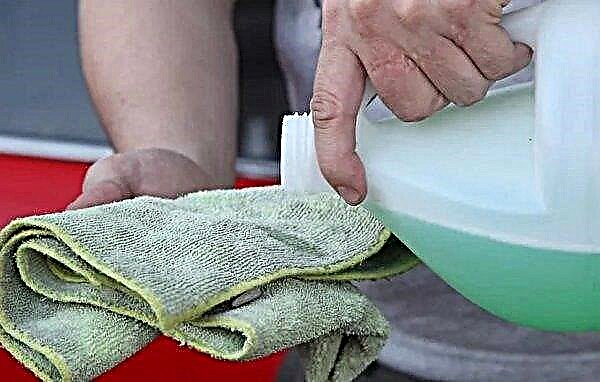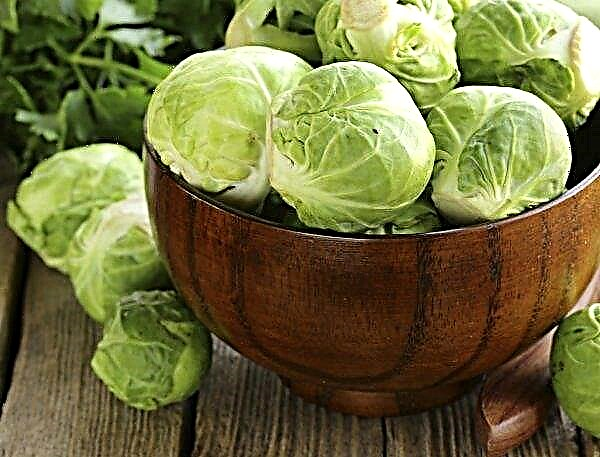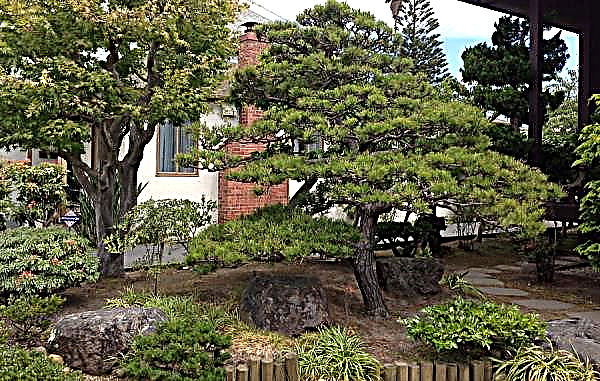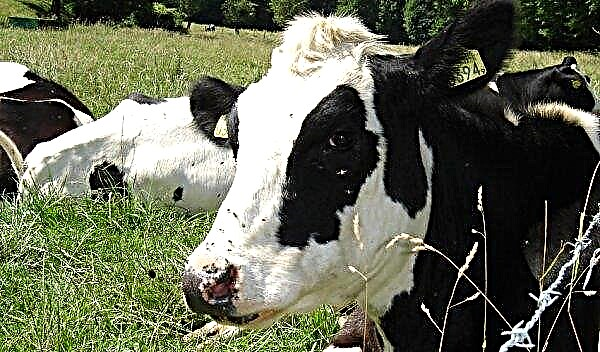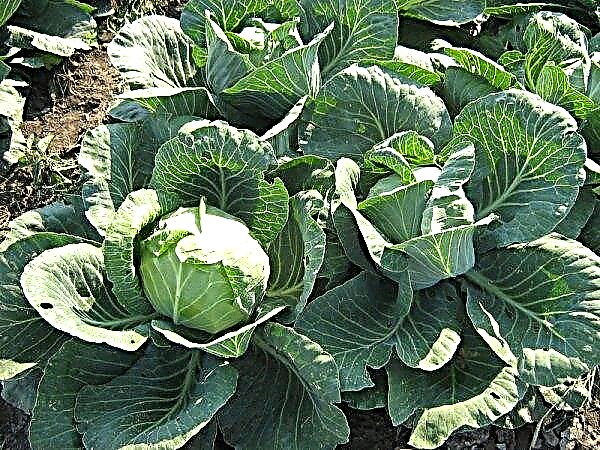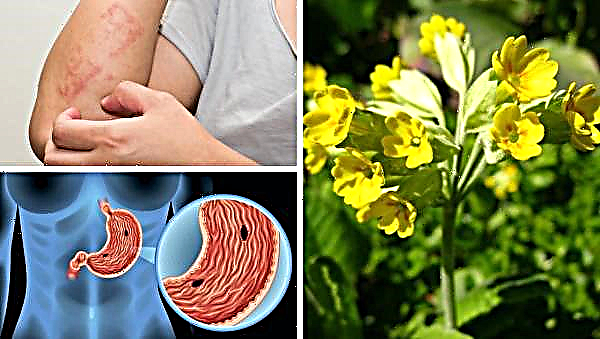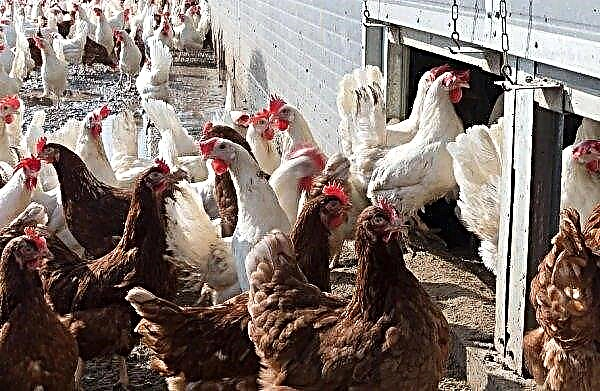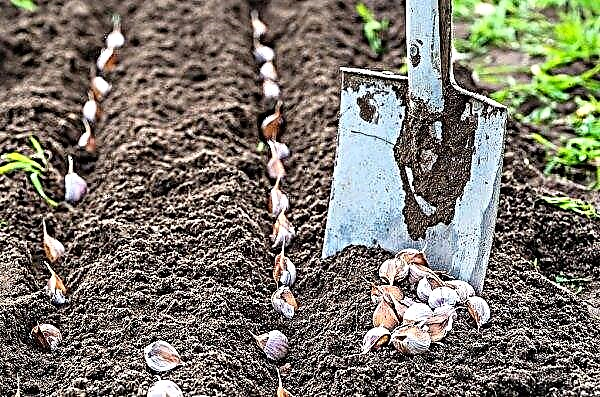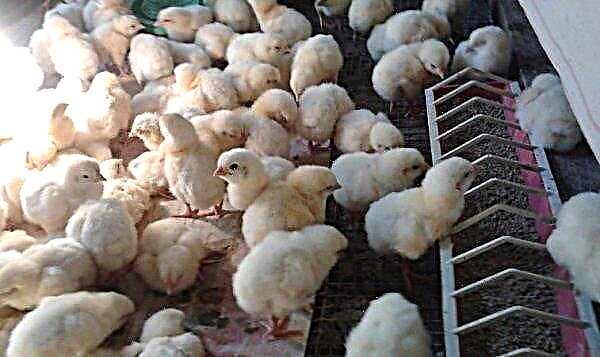Innovative methods of growing garden crops do not always immediately find positive reviews in the circle of gardeners, however, the more often positive reviews appear regarding each of them, the more interest arises in them. This also applies to the process of cultivating cucumbers in bags, and what exactly it is remarkable for and what results can be expected - more on this later.
What is the success of this landing method?
Strange at first glance, growing a garden in plastic bags, in fact, successfully replaces the use of seedlings or large containers for home planting. With minimal costs for materials and equipment for plant cultivation, you can provide them with uniform heating of the root system and faster growth of the aerial parts, which guarantees earlier fruiting and abundance of the crop. Simply put, filling the bags with prepared nutrient soil mixture, you get small beds in any place convenient for this, besides, caring for them will be much easier than in the same ordinary greenhouse.
Did you know? The longest cucumber in the Guinness Book of Records grew in the garden of British farmer Alfa Cobb in 2008. Its length was 91.7 cm, and this despite the fact that the previous similar record of the same gardener was 89.2 cm.
Advantages and disadvantages
The advantages of using this particular method of growing cucumbers are many, but with them there are also some disadvantages that slightly overshadow the overall picture. For this reason, in order to make a final decision, it is worth exploring all the advantages and weaknesses of cultivating cucumbers in bags.
- The list of benefits includes the following:
- saving space in the beds, which is especially true for small areas of the infield;
- simplicity and ease of care for growing plantings (for example, weeds do not develop so actively in bags);
- earlier dates for a tasty and high-quality crop;
- long fruiting period;
- the reduced likelihood of diseases and pests of the culture, but even if this happens, it will be much easier to cope with the problem.
- As for the weaknesses of this method, first of all it is:
- the complexity of controlling the moisture of the substrate, and in case of waterlogging, the root system of plants quickly decays, and they quickly die (for gardeners who come to the site once a week, this is not the best option for planting);
- the impossibility of successful use of bags in regions with a dry and arid climate, since a rapid increase in soil temperature contributes to the drying of the root system;
- the likelihood of damage to the bags and scattering of the soil under the influence of ultraviolet solar radiation (for this reason, it is worthwhile to approach the choice of suitable products with all responsibility, preferring mainly dense materials).
With sufficient attention to plantations, all of these shortcomings can be minimized, significantly increasing the chances of successfully growing cucumber crops in bags or sacks.
Preparatory work
Technically, planting cucumbers in bags is a more time-consuming process than placing them in open ground. But strictly observing all the requirements for preparing materials and performing the planting actions themselves, even a beginner gardener can cope with the task.
Preparation of bags and fertile soil
The first thing to find out at the preparatory stage is what exactly are you going to work with: with polyethylene or burlap (you can use heavy sugar bags). Their number should be calculated based on the number of seedlings available so that individual specimens are spacious enough in the finished "garden". In addition to bags, peat, tubes, twine and wooden sticks should also be prepared, not to mention the seeds or seedlings of cucumbers. All bags must be durable, better new and pre-disinfected with a weak solution of potassium permanganate or any other disinfectant.
After drying of the material, the products are filled with a nutrient substrate, adhering to the following recommendations:
- Considering the fact that the soil mixture in the bag will reach only half of its total volume, the upper edges are wrapped with a roller, which in the future will serve as a restriction for the makeshift mini-beds.
- At the bottom of the product, you should place a layer of manure, chicken droppings, straw, kitchen waste (preferably dried), last year's foliage and thin twigs (everything that is usually used for composting will do). The thickness of such a layer should be about 20-30 cm.
- The prepared pillow is tamped and well moistened, for which pure hot water or a mixture of water and preparations is usually used to accelerate the formation of compost (for example, the composition “Radiance”).
- When growing cucumbers at home (on the terrace or on the balcony), you should immediately place a basin or other suitable container under the bag, into which excess water should drain after watering.
- On top of the prepared base, 3-4 buckets of the prepared soil mixture should be filled, which includes soil and humus taken from the site, in a ratio of 2: 1 or 1: 1, which will depend on the level of natural fertility of the prepared land. To improve the characteristics of the substrate, 1-2 cups of wood ash can be added to the resulting mixture, or you can use only special universal soil for garden crops. The soil layer is usually not less than 20 cm.
- In the lower end part of the bag, several small punctures with a knife should be made, which will protect the rhizome of cucumbers from stagnation of irrigation fluid and decay of roots.
In addition to the described method for performing preparatory measures, there are some other options for growing plants in bags:Important! Fill the bag with earth only in the place where further cultivation of adult plants is planned, since transportation of the finished "beds" is a very time-consuming task.
- To create horizontal beds, the product is filled with earth to the very top, after which another bag is put on the side of the neck and fastened to an already filled soil. For planting cucumbers, a suitable hole is cut from the end side, after which the stands can either be laid on the ground or suspended in the right place.
- You can organize a garden in bags with a ready-made substrate, with a volume of at least 20 liters. They are laid horizontally on the prepared surface, and then arrange suitable holes for planting seeds or seedlings of the desired culture.
- Sometimes it is practiced planting in bags, bags or other similar products, which, as in the first case, are filled up to half with a nutritious soil mixture, and holes are made in the lower part.
 With a small amount of seedlings, any of the above options can be used, but it is most convenient to grow plants in large bags filled to half.
With a small amount of seedlings, any of the above options can be used, but it is most convenient to grow plants in large bags filled to half.Seed preparation
Preparation of seed material for sowing in bags is carried out in the same way as when planting in open soil or on greenhouse beds. In this case, the following actions are included in the list of main preparatory measures (sometimes they are performed step by step):
- Seed calibration with the selection of the best specimens, without signs of disease and pest damage (usually manifested by spots on the surface).

- Plant material disinfection using a 1% solution of potassium permanganate or special antibacterial drugs, such as the Fitosporin-M or Bakis composition (soaking is performed no longer than 20-30 minutes, unless otherwise indicated on the package with the composition).

- Warming of planting material before sowing in the soil (for several hours, the seeds are subjected to temperature exposure within + 40 ° C). Unfortunately, at home it is very difficult to control this process, so in order to protect the seeds from unnecessary stress, it is worthwhile to reconsider the appropriateness of heating the planting material in each individual case.

- Soaking Cucumber Seeds. This method of preplant treatment is the most popular and involves placing the selected planting material on a wet towel or gauze, so that the liquid covers only the lower part of the seeds, and the top is in the air. The exposure time of seeds in such conditions is 1-2 days or until the upper shell is cracked, which will accelerate the germination of plants after planting in the ground.
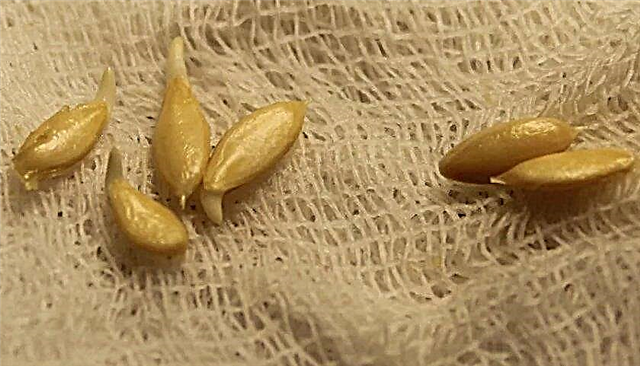
- Seed germination. This method of preparation will be relevant for those cases when there are doubts about the quality of the purchased seeds, but usually they rarely resort to it. The essence of preparation is to spray the material with water from a spray bottle and remove the upper layer of the skin with a toothpick, after which the inside is placed on a moist cotton pad and left for a day at a temperature of +25 ... + 28 ° С, periodically moistening the surface.

Did you know? Cucumber juice relieves pain when getting burns, so it is recommended to lay thin plates of chopped vegetables on the affected area or prepare a compress from the gruel of the fetus.
Sowing cucumbers in a bag
Planting cucumbers in a bag can be carried out in two main ways: using seedlings or simply prepared seeds. In general, both procedures are almost completely consistent with those carried out in the open field, but there are still some peculiarities.
Seeds
Sowing cucumber seeds in bags is carried out only when the average daily ambient temperature is set at + 15 ° C and the threat of return frosts passes. In the central regions of the Russian Federation, such conditions are not created until May, therefore, it is better to plant cucumbers at this time. In one bag, with a volume of 50 kg, you can place 2–4 cucumber seeds (the exact amount depends on the varietal characteristics of the selected crop), deepening them into the soil by at least 2 cm.
At the end of planting, it remains only to moisten the substrate and cover the cucumbers with a plastic film, which should accelerate the germination of seeds. If necessary, plants can be transplanted at the age of 30–35 days.
So that the bag with the culture overturns it, it is fixed with the help of prepared sticks and twine, additionally pouring a certain amount of soil from the outside.
Seedlings
Planting in bags of grown cucumber seedlings - a more difficult task than sowing seeds, because the main thing is to maintain the integrity of the root system of small plants. To exclude possible troubles, a few days before the seedlings move to new conditions, cucumbers are abundantly watered, and in the bag with the soil they make small indentations, the sizes of which will correspond to the dimensions of an earthen coma from the previous seedling capacity. The bottom of the resulting hole must be moistened with warm water, and then carefully remove the plant from its former place of growth and place in a new soil with an earthen lump. It is impossible to pull the plant by the stem, and if it is difficult to remove it from the glass, then it is better to simply turn the container over and gently tap on the bottom.
It is impossible to pull the plant by the stem, and if it is difficult to remove it from the glass, then it is better to simply turn the container over and gently tap on the bottom.
It is very easy to place an earth lump braided by roots in a dug hole, and then gradually fill it with the remaining substrate. The soil around the stem part is compacted, and a little more soil is poured on top, up to the level of cotyledon leaves. With further care, seedlings need to be regularly moistened, and if the bag is in a well-lit place, then also a little shade from direct sunlight. A fine mesh, tulle or spanbond is perfect for the role of covering material.
Important! The number of seedlings per bag depends on the characteristics of a particular variety: it is advisable to place vigorous crops in 1-2 copies, and representatives of small varieties - 3-4 in one "bed".
Seedling Care Rules
Care for seedlings of cucumbers in bags begins from the day they are planted in the soil and provides for regular moistening of the substrate, feeding the plants and the formation of seedlings, which favorably affects the future harvest. If you believe the reviews of gardeners, growing cucumbers in a bag is as simple as planting them in such containers, the main thing is to know about some basic rules for performing all activities.
Bush formation
A properly formed plant not only looks more attractive, but also contributes to the abundant formation of fruit ovariesTherefore, it is important to remove lateral shoots and other plant debris (for example, damaged or diseased leaves) in the early stages of growing cucumber seedlings. Usually, cucumbers try to form into one stalk, cutting off all the extra lateral branches. As soon as the plant reaches 45–50 cm, all lower leaves, shoots and flowers are also subject to removal (the “blinding” procedure). Until the plant grows to 1 m, all lateral branches are pinched at the level of one leaf, so that only 1 ovary and 2-3 leaf plates remain. 
One or a half meter plant is formed a little differently, leaving all the lateral shoots at 3-4 nodes, and so that on each branch 2 ovaries and 3-4 leaves continued to grow. If the plant continues to stretch in height, it can be thrown over the trellis and continued to pinch at the level of the third leaf, leaving 3-4 ovaries and the same number of leaf plates. In the future, upon reaching the maximum permissible length (it is different for each variety), pinch the top of the main shoot at a height of 20 cm from the soil surface.
For the normal formation of cucumber bushes, even in bags you will have to install the appropriate supportsto which you can tie the remaining after trimming the lashes. After the formation of more than five leaf plates on the bush, the whole plant is tied to twine, pre-fixed to the top of the wooden support (usually set in the center of the bag).
Watering and fertilizer
In order for planted cucumbers to grow strong and bring a stable crop of quality fruits, they should be regularly watered throughout the growth and development period, keeping the soil in the bag slightly moist. On hot days, the irrigation regularity is 1 time in 2-3 days, and the procedure itself is performed mainly in the evening, using warm, well-defended water. At the beginning of flowering bushes, the regularity of soil moisture can be slightly reduced, which will provide the best fruit ovary. However, if the cucumber bushes begin to fade, watering resumes according to the usual pattern.
We must not forget about the need to feed the culture. For the entire growing season, fertilizers are applied three times: for the first time after the appearance of the first seedlings (a weak solution of chicken droppings diluted in water in a ratio of 1:15 is used), the second - during flowering (ready-made phosphorus-potassium compounds will be useful), and the third - at the beginning of active fruiting, using superphosphate fertilizer.
To protect the plantings from root rot, it is useful to spill the soil in bags with a solution of green tea, prepared by mixing 10 drops of a substance with a bucket of water.
Important! If an infusion of herbs collected on the site is used to feed cucumbers, make sure that nettle and dandelions prevail in it, but wheatgrass is undesirable.
Harvesting and increasing productivity of bushes
Harvesting of bagged cucumbers is carried out according to the general scenario for plants of a particular variety.. The only thing that can be hoped for is an earlier period of maturation of the first Zelentsy, but only if the culture was provided with all the conditions for this. Young fruits should be harvested daily, preventing overriding. Firstly, in this form they will be tastier, and secondly, the bush will be able to form a new ovary and soon another good crop will appear (the fruiting period may stretch over time).
Perhaps in a photo or video, bagged cucumbers seem like a ridiculous and ridiculous undertaking, but in practice many gardeners have confirmed the success of using just this method of planting this crop. Moreover, you do not need to immediately plant hundreds of cucumber bushes, because to make sure that their cultivation is effective, it’s enough to place 5-10 plants in bags, having organized full-fledged care for the “beds”.






